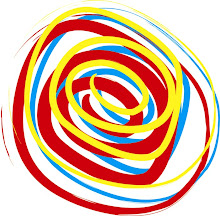
The Christmas 2009 exhibition at New Brewery Arts is Cut & Fold, a fabulous display of what can be created with that often overlooked medium - paper! From big, frilly frocks to tiny, filligree flowers this show demonstrates what CAN be done.
The exhibition includes work by internationally renowned artists from the USA, Japan, Holland and France as well as our own UK talent. On show are two of Susan Stockwell's gorgeous dresses, Clare Brewster's creations from street maps, and intricate pieces by Thurle Wright, to name but three.
Events running in parallel with the exhibition include contemporary bookmaking workshops, an artists' books market, a couture millinery 'paper corsages' workshop, lantern making and very seasonal Christmas card design sessions. As an accessible source of artistic inspiration, New Brewery Arts has brought paper to the attention of the Cotswolds public.
 NBA is leading the field in examining the full artistic potential of a particular medium. The sparkling In & Out exhibition of 2008 concentrated our focus on glass - IN at the NBA gallery and OUT in the fabulous gardens at Quenington Old Rectory. Our resident glass-blowers, LoCo Glass, exhibited work at both venues and are happy to demonstrate their art in action at their studio here in Cirencester.
NBA is leading the field in examining the full artistic potential of a particular medium. The sparkling In & Out exhibition of 2008 concentrated our focus on glass - IN at the NBA gallery and OUT in the fabulous gardens at Quenington Old Rectory. Our resident glass-blowers, LoCo Glass, exhibited work at both venues and are happy to demonstrate their art in action at their studio here in Cirencester. It's fantastic to see the way artists interpret a medium in so many different ways - not to mention inspiring. Any when you can join in, as with the paper exhibition, it makes the experience so much more relevant, personal and enjoyable. Do try to make it to Cut & Fold. It's a Christmas treat.
It's fantastic to see the way artists interpret a medium in so many different ways - not to mention inspiring. Any when you can join in, as with the paper exhibition, it makes the experience so much more relevant, personal and enjoyable. Do try to make it to Cut & Fold. It's a Christmas treat.Image 1: Susan Stockwell's Frill in Cut & Fold at New Brewery Arts
Image 2: Anthony Scala's Annulum IN at New Brewery Arts
Image 3: Neil Wilkin OUT at Quenington Old Rectory
Image 3: Neil Wilkin OUT at Quenington Old Rectory

























